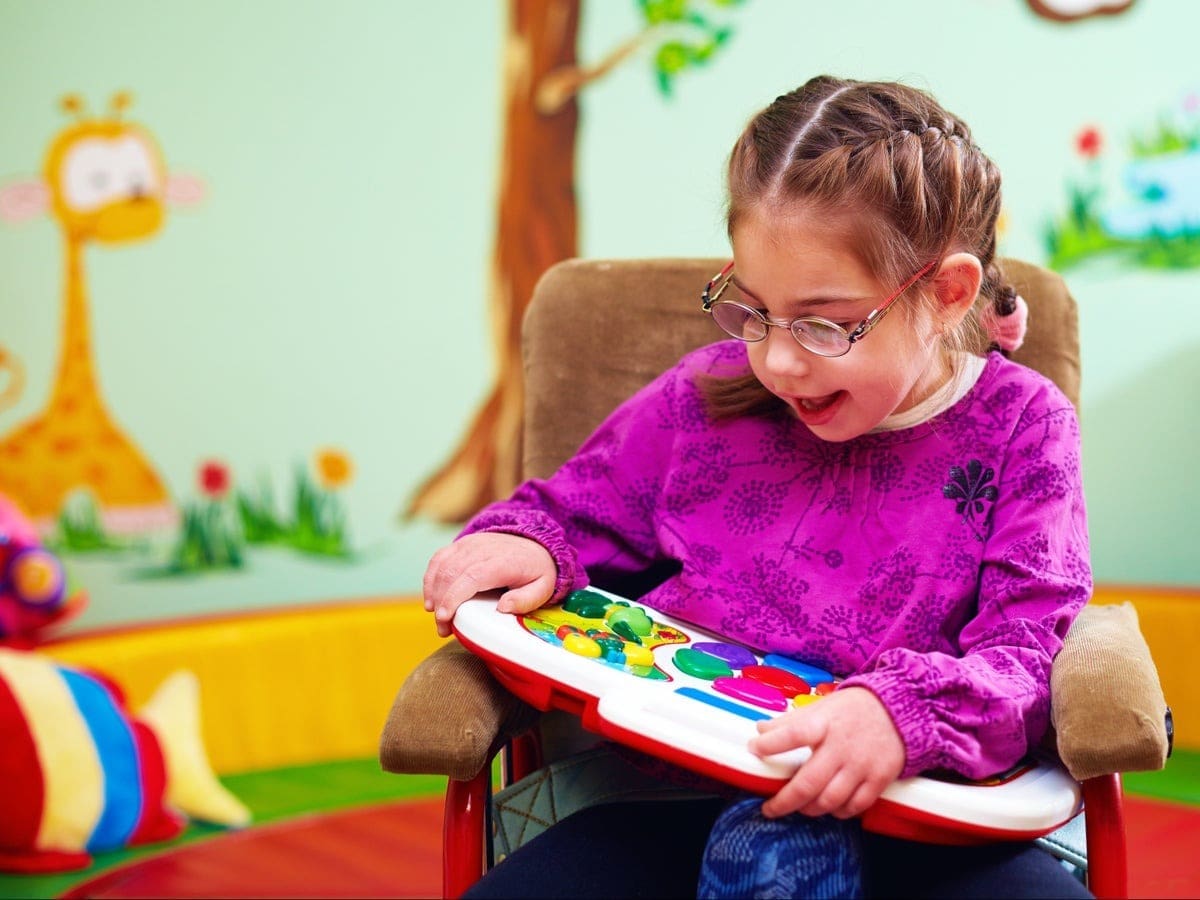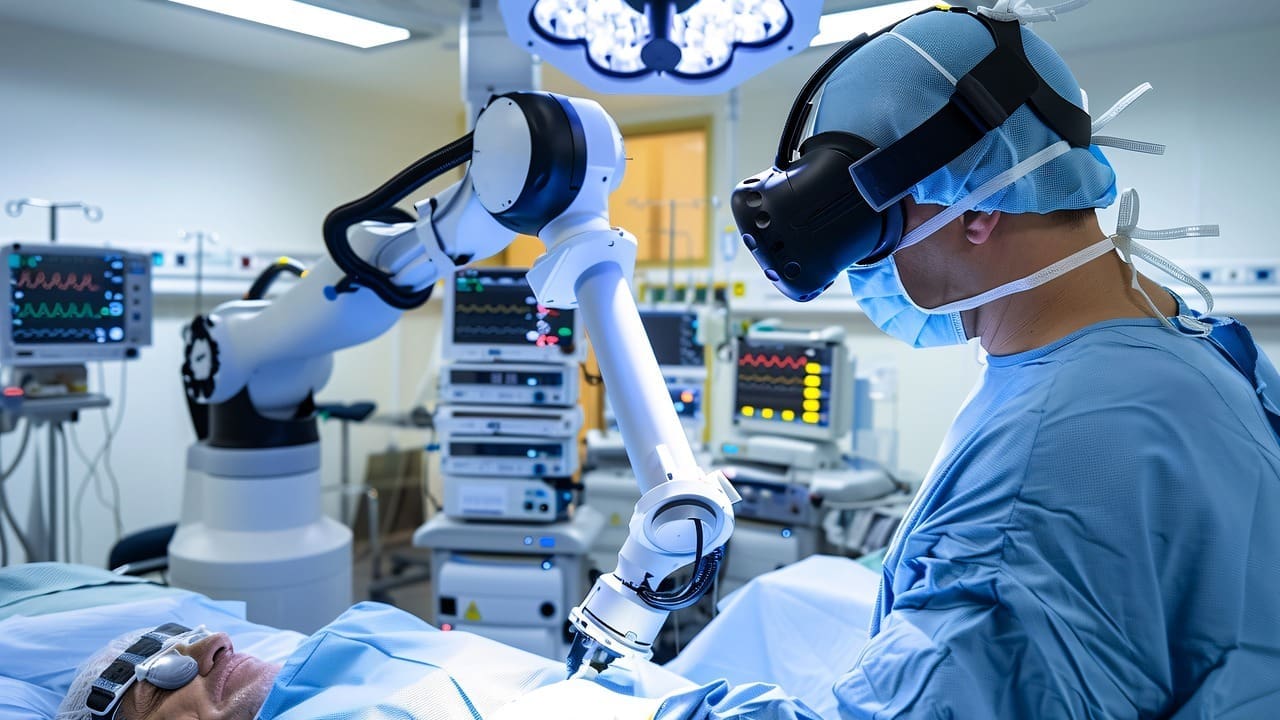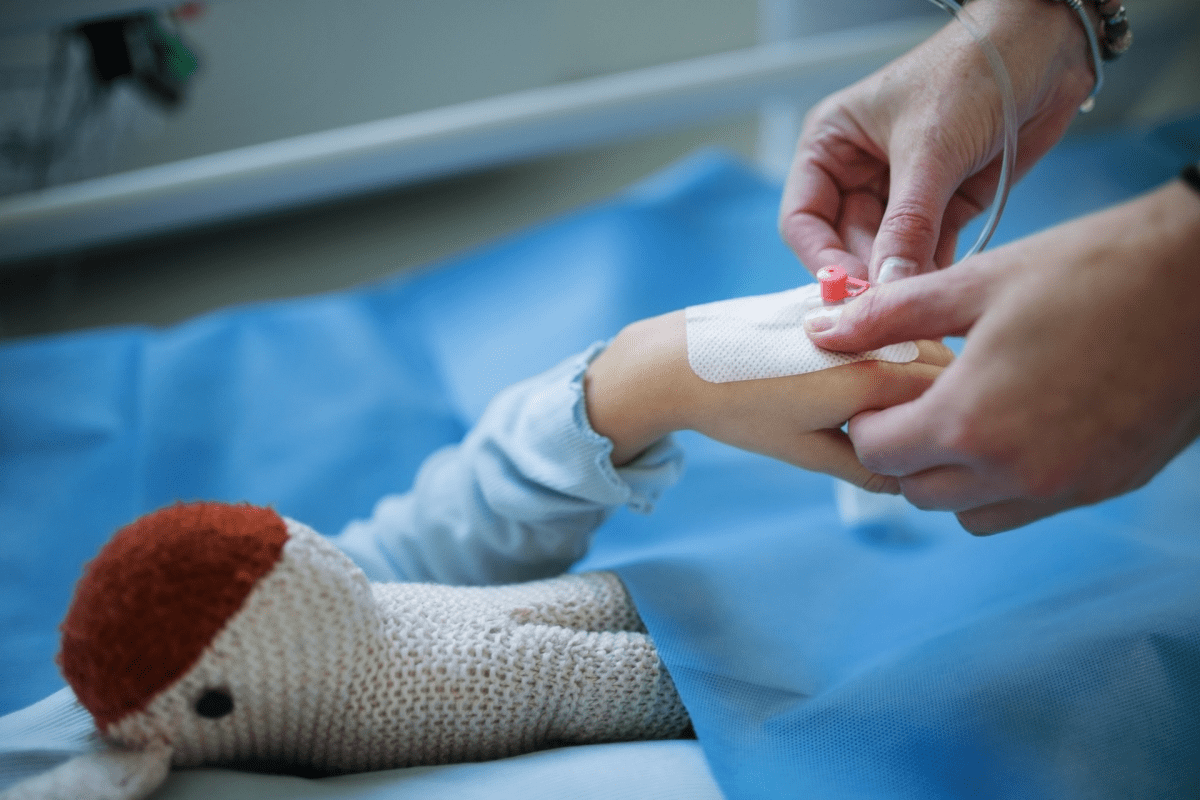Last Updated on November 26, 2025 by Bilal Hasdemir
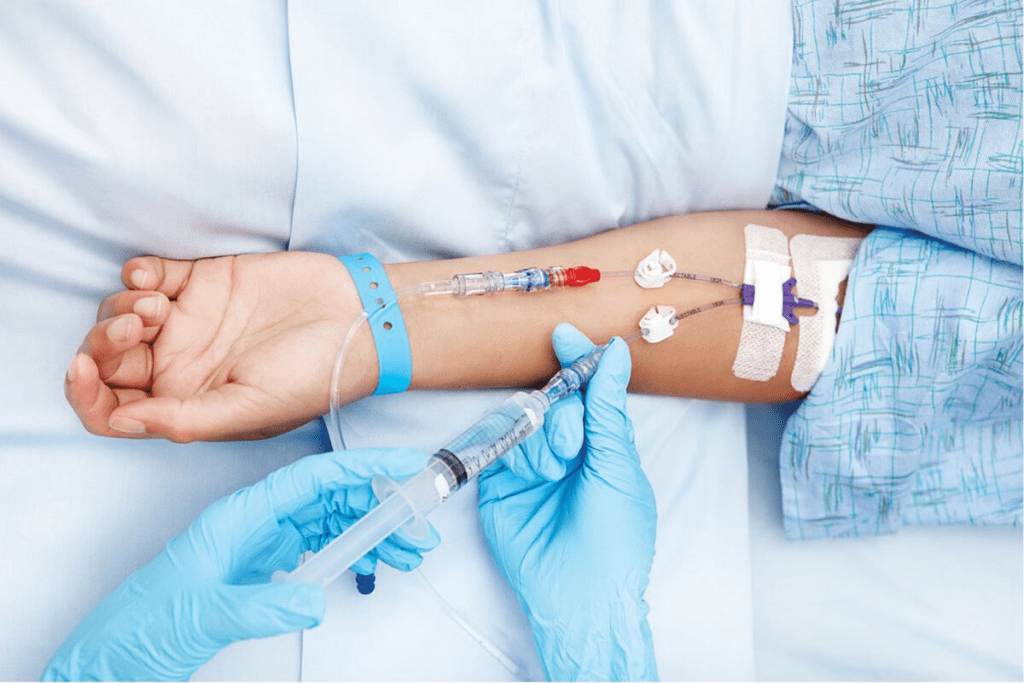
It’s important for patients to know their options after chemotherapy. This is especially true for those who have gone through this tough treatment.
It aims to reduce the chance of cancer coming back. This info is key for those looking into treatment options after chemo.
We know how vital it is to understand the options for the next treatment after chemotherapy to stop cancer from coming back. We’re here to offer full support to patients from around the world.
Key Takeaways
- Adjuvant therapy is a treatment given after primary treatments to lower cancer recurrence risk.
- Understanding treatment options after chemotherapy is crucial for patient care.
- Comprehensive support is available for international patients seeking advanced medical treatments.
- Adjuvant therapy can help prevent cancer from coming back.
- Patients should be informed about their treatment options to make informed decisions.
Understanding Post-Chemotherapy Treatment Pathways
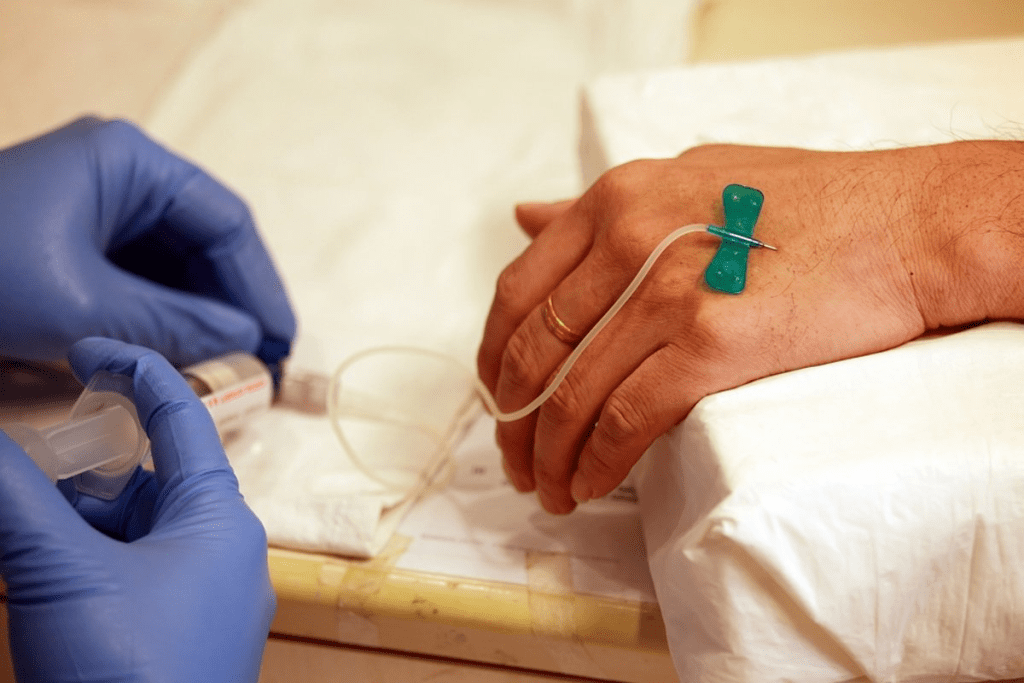
Knowing what happens after chemotherapy is key for patients. The American Cancer Society stresses the need to understand treatment options. This helps patients make informed choices about their care.
Why Additional Treatment May Be Necessary
After chemotherapy, more treatment might be needed to get rid of all cancer cells. Chemotherapy is effective but might not kill every cancer cell. This could lead to cancer coming back.
Reasons for additional treatment include:
- Cancer cells that may have survived chemotherapy
- Reducing the risk of cancer recurrence
- Addressing any remaining tumors or affected areas
The Concept of Treatment Sequencing
Treatment sequencing means the order of treatments. This can be chemotherapy followed by surgery, radiation, or other therapies. The order depends on the cancer type, stage, and the patient’s health.
The goal of treatment sequencing is to maximize effectiveness while minimizing side effects and improving patient outcomes.
Personalized Treatment Approaches
Personalized treatment plans are made for each patient. They consider genetic profiles, medical history, and lifestyle. This helps find the best treatment plan.
Healthcare providers use advanced diagnostic tools and techniques. This helps create targeted treatment strategies. These strategies improve outcomes and reduce unnecessary treatments.
Evaluating the Success of Chemotherapy
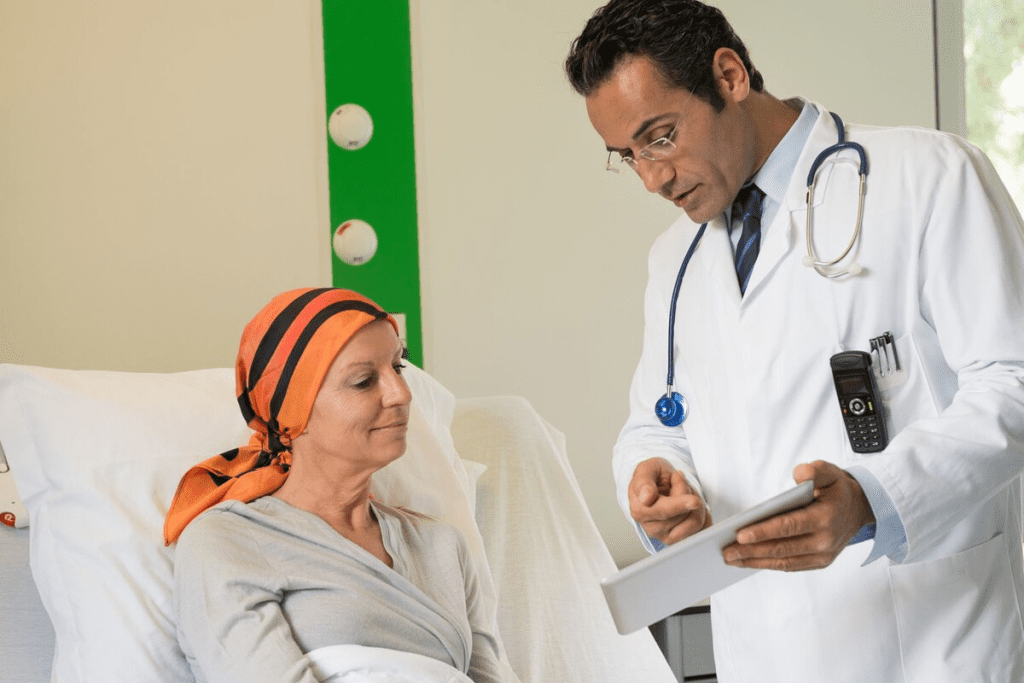
Checking how well chemotherapy works is key for cancer patients. It shows if the cancer is responding to the treatment and how much. This is crucial for deciding what to do next.
Measuring Treatment Response
There are many ways to check if treatment is working. Doctors use CT scans, MRI, blood tests, and physical checks. These help figure out if the chemotherapy is effective.
Cancer.Net says checking treatment response is very important. It helps decide if the cancer is getting better or if other treatments are needed.
Complete vs. Partial Response
A complete response means all cancer is gone. A partial response means the cancer is smaller but still there. Knowing this helps plan future treatments.
Complete Response: No cancer is left.
Partial Response: Cancer is smaller but still there.
Stable Disease vs. Progressive Disease
Stable disease means the cancer hasn’t changed much. Progressive disease means the cancer is getting worse. These are important for deciding what to do next.
Here’s a table showing what happens after chemotherapy:
| Treatment Outcome | Description | Typical Next Steps |
| Complete Response | No detectable cancer | Monitoring, maintenance therapy |
| Partial Response | Cancer is reduced but still detectable | Continued treatment, possibly with additional therapies |
| Stable Disease | Cancer unchanged | Continued monitoring, possible change in treatment |
| Progressive Disease | Cancer has grown or spread | Alternative treatments, clinical trials |
Knowing how well chemotherapy works is very important. It helps doctors find the best treatment for each patient. This ensures the best care possible.
Next Treatment After Chemotherapy: Common Options
Chemotherapy is a big step, but often, more treatments are needed for the best results. The choice of what comes next depends on the cancer type, how well the patient responded to chemotherapy, and their health.
Maintenance Therapy
Maintenance therapy is given after the first chemotherapy is done. It aims to keep the cancer away by preventing it from coming back. This treatment is usually less strong than the first one and can be taken by mouth or through an infusion.
Benefits of Maintenance Therapy: It can make the cancer stay away longer, lower the chance of it coming back, and help patients live longer.
Consolidation Treatment
Consolidation treatment is used after chemotherapy to get rid of any cancer cells left behind. It’s more intense than maintenance therapy and aims to build on the progress made in the first treatment. This can include high-dose chemotherapy, radiation, or other strong treatments.
Consolidation treatment is key for patients at high risk of cancer coming back. It targets any leftover cancer cells, which can greatly increase the chance of long-term survival.
Second-Line Chemotherapy
For patients whose cancer comes back or doesn’t respond to the first treatment, second-line chemotherapy is an option. This uses different drugs or combinations not used before. The goal is to control the cancer, ease symptoms, and improve life quality.
- Second-line chemotherapy can give hope to patients with cancer that has come back or is resistant.
- The choice of second-line chemotherapy depends on many factors, like previous treatments, cancer type, and overall health.
In conclusion, the next treatment after chemotherapy is tailored to each patient. Knowing about maintenance therapy, consolidation treatment, and second-line chemotherapy is key to making informed choices about cancer care.
Radiation Therapy as a Post-Chemotherapy Option
Radiation therapy is a key treatment after chemotherapy. It targets any cancer cells left behind.
When Radiation Follows Chemotherapy
Dealing with more treatment can feel overwhelming. But, radiation therapy can help make sure cancer is fully treated.
Types of Radiation Treatments
There are different radiation treatments. These include external beam radiation therapy (EBRT) and internal radiation therapy (brachytherapy). EBRT sends radiation from outside the body to the cancer. Brachytherapy puts a small amount of radioactive material close to or in the tumor.
- External Beam Radiation Therapy (EBRT)
- Internal Radiation Therapy (Brachytherapy)
- Stereotactic Body Radiation Therapy (SBRT)
Expected Outcomes and Side Effects
The goal of radiation therapy is to kill cancer cells without harming healthy tissue too much. While it works well, it can also cause side effects. These include tiredness, skin changes, and nausea.
Talking to your healthcare provider about the benefits and risks is crucial. This way, you’ll know what to expect from your treatment.
“Radiation therapy is a highly effective treatment for many types of cancer, offering patients a chance at long-term survival and improved quality of life.” ” American Cancer Society
We’re dedicated to giving you the best care and support during your treatment. We want to make sure you get the best results.
Surgical Interventions Following Chemotherapy
Surgery is a key part of treatment for many after chemotherapy. It helps manage cancer, fix damage, or boost quality of life.
Debulking Surgery
Debulking surgery removes as much tumor as possible when full removal isn’t possible. It helps ease symptoms and make other treatments work better.
- Reduces tumor size
- Relieves symptoms
- Enhances quality of life
Resection of Residual Tumors
Chemotherapy might not get rid of all the tumor. Resection of residual tumors removes the leftover cancerous tissue. This is key for long-term remission or cure.
Key considerations include:
- The location and size of the residual tumor
- The patient’s overall health and recovery potential
- The potential benefits and risks of the surgery
Reconstructive Procedures
Reconstructive surgery after chemotherapy and tumor removal helps restore looks and function. It’s customized to each patient’s needs, using various techniques.
Understanding the different surgeries helps patients make informed choices about their care after chemotherapy. We work closely with our patients to find the best treatment plan, ensuring they get the best care.
Targeted Therapy as a Second-Line Treatment
When chemotherapy doesn’t work, targeted therapy becomes a key second-line treatment. It targets specific traits of cancer cells, like proteins or genes, that help them grow and spread.
The National Cancer Institute says targeted therapy can be a second-line treatment. It targets specific traits of cancer cells. “Targeted cancer therapies are drugs or other substances that block the growth and spread of cancer by interfering with specific molecules (‘molecular targets’) that are involved in the growth, progression, and spread of cancer,” as stated by the National Cancer Institute.
Mechanism of Action
Targeted therapies find and attack specific cancer cells. They do this while trying not to harm normal cells. This is different from traditional chemotherapy, which affects both cancerous and healthy cells. By focusing on cancer cells, these therapies can lower treatment side effects.
Common Targeted Agents
Many targeted therapy drugs are approved for different cancers. These include:
- Monoclonal antibodies that target specific proteins on cancer cells
- Tyrosine kinase inhibitors that block signals promoting cancer cell growth
- Mammalian target of rapamycin (mTOR) inhibitors that interfere with proteins involved in cell growth and division
Examples of targeted therapy drugs include trastuzumab (Herceptin) for HER2-positive breast cancer and imatinib (Gleevec) for certain types of leukemia.
Matching Therapies to Genetic Profiles
Genetic testing has helped match targeted therapies to patients’ genetic profiles. This personalized approach to cancer treatment ensures patients get the most effective therapy for their cancer.
“The use of targeted therapy requires a comprehensive understanding of the genetic and molecular characteristics of the patient’s cancer. By tailoring treatment to the individual’s cancer profile, we can improve outcomes and reduce unnecessary side effects.” “ An oncologist
As we explore targeted therapy further, it’s clear that it’s a big step forward in oncology. It offers new hope for patients needing follow-up cancer treatment.
Immunotherapy After Chemotherapy Failure
When chemotherapy doesn’t work, patients and doctors look for other treatments. Immunotherapy is one option. It helps your immune system fight cancer.
Checkpoint Inhibitors
Checkpoint inhibitors are a type of immunotherapy. They let your immune system attack cancer cells better. Drugs like pembrolizumab and nivolumab are promising for many cancers.
These drugs target proteins on cancer cells. This stops cancer from hiding from your immune system. So, your immune system can find and destroy cancer cells.
CAR T-Cell Therapy
CAR T-cell therapy is a special immunotherapy. It takes T cells from your blood, changes them to find cancer, and puts them back in. This personalized treatment works well for some blood cancers.
This therapy is complex. It involves collecting T cells, changing them, and putting them back in. It can be very effective but may have side effects like cytokine release syndrome.
Cancer Vaccines
Cancer vaccines are another type of immunotherapy. They make your immune system attack cancer cells. They’re not like regular vaccines but are made to treat cancer.
Examples include sipuleucel-T for prostate cancer and vaccines for other cancers. These vaccines can be used alone or with other treatments to make them work better.
Combination Immunotherapy Approaches
Using different immunotherapies together or with other treatments is being researched. The goal is to make treatments work better and fight resistance.
For example, mixing checkpoint inhibitors with CAR T-cell therapy or using vaccines with chemotherapy is being tested. These combinations might help patients who didn’t respond to the first treatments.
As we learn more about cancer treatment, using immunotherapy in cancer recovery plans and survivorship care is key. Knowing about immunotherapy options helps patients and doctors make better choices for next steps.
Hormone Therapy as a Follow-Up Treatment
Chemotherapy is just the start for many. Hormone therapy is often the next step in cancer treatment. It targets cancers that grow because of hormones, like some breast and prostate cancers.
The National Cancer Institute says hormone therapy is a good follow-up for those who’ve had chemo. It either lowers hormone levels or stops them from reaching cancer cells.
For Breast Cancer Patients
For breast cancer, hormone therapy is key for those with hormone receptor-positive tumors. Drugs like tamoxifen and aromatase inhibitors block estrogen from reaching cancer cells. This slows or stops tumor growth.
- Tamoxifen is used in premenopausal women to block estrogen receptors.
- Aromatase inhibitors are for postmenopausal women to lower estrogen production.
For Prostate Cancer Patients
Prostate cancer patients also benefit from hormone therapy. The goal is to lower testosterone, which feeds cancer growth. Androgen deprivation therapy (ADT) is common, using meds or surgery.
- Luteinizing hormone-releasing hormone (LHRH) agonists and antagonists lower testosterone levels.
- Anti-androgens block testosterone’s effect on cancer cells.
Duration and Effectiveness
The length of hormone therapy varies by cancer type, stage, and treatment response. Many studies show it greatly lowers cancer recurrence risk.
Talking to your doctor about hormone therapy’s benefits and side effects is key. Knowing your options helps you make informed decisions about your care.
We understand each patient’s journey is different. Hormone therapy is just one treatment path. We aim to provide comprehensive care and support, helping patients navigate their options for the best outcomes.
Stem Cell Transplantation Post-Chemotherapy
For some cancer patients, stem cell transplantation is a promising treatment after chemotherapy. This method replaces damaged stem cells with healthy ones. It can lead to a cure or longer remission. We will look at the different types of stem cell transplants, the process, and what patients can expect during recovery.
Autologous vs. Allogeneic Transplants
There are two main types of stem cell transplants: autologous and allogeneic. Autologous transplants use the patient’s own stem cells, collected before chemotherapy. On the other hand, allogeneic transplants use stem cells from a donor. The choice depends on the cancer type, the patient’s health, and donor availability.
Autologous transplants reduce the risk of GVHD but may reintroduce cancerous cells. Allogeneic transplants offer a graft-versus-tumor effect but carry a higher GVHD risk.
The Transplantation Process
The process starts with preparation, which may include more chemotherapy or radiation. This is to eliminate any remaining cancer cells. Then, the patient receives the stem cells through an intravenous line, like a blood transfusion. The stem cells then go to the bone marrow to produce new blood cells.
- Pre-transplant conditioning: High-dose chemotherapy or radiation to kill cancer cells.
- Stem cell infusion: The transplant, where stem cells are infused into the bloodstream.
- Engraftment: The time when the transplanted stem cells start making new blood cells.
Recovery and Long-term Outcomes
Recovery from a stem cell transplant is tough and can take months to a year or more. Patients are watched closely for complications like infections, GVHD, and organ damage. They often need supportive care, including medications and transfusions.
Long-term results vary based on the cancer type, age, and health. Some patients get complete remission, while others may see cancer return. It’s important to have ongoing care to watch for late effects and manage complications.
- Regular follow-up appointments to monitor health and detect any potential issues early.
- Managing late effects, such as organ damage or secondary cancers.
- Maintaining a healthy lifestyle, including a balanced diet and regular exercise.
Clinical Trials and Experimental Treatments
Chemotherapy is just the start for many. Clinical trials are a key next step. They offer new hope and ways to fight cancer.
Finding Appropriate Trials
Finding the right clinical trial can be tough. Start with the American Cancer Society for info on trials. Your healthcare team can also help find trials that fit your needs.
Look at the trial’s purpose and what treatment is being tested. Consider the benefits and risks. Knowing the trial’s phase is also important.
Eligibility Considerations
Eligibility for trials varies. You must meet certain criteria, like cancer type and stage, and your health. Knowing these criteria helps decide if a trial is right for you.
Your healthcare provider can check if you’re eligible. Ask about the trial’s details, like costs, travel, and side effects.
Weighing Risks and Benefits
Think carefully about the risks and benefits of trials. Experimental treatments might offer new hope. But they can also have unknown side effects.
Talk to your healthcare team about your options. Consider how the trial might affect your life. Getting advice from others who’ve tried trials can also help.
By looking into clinical trials and experimental treatments, we can make smart choices. This ensures we’re exploring all care options after chemotherapy.
Post-Chemotherapy Treatment by Cancer Type
The journey doesn’t end with chemotherapy; the type of cancer dictates what comes next. Treatment plans after chemotherapy vary significantly based on the specific cancer type, its stage, and the patient’s overall health.
Breast Cancer
For breast cancer patients, post-chemotherapy treatment often involves a combination of local and systemic therapies. Hormone therapy is commonly used for hormone receptor-positive breast cancer, while targeted therapy may be recommended for HER2-positive cases.
We also consider surgery or radiation therapy to eliminate any remaining cancer cells in the breast, armpit, or chest wall. The choice between these treatments depends on the initial extent of the disease and the response to chemotherapy.
Lung Cancer
Lung cancer treatment after chemotherapy can include targeted therapy for patients with specific genetic mutations, such as EGFR or ALK. Immunotherapy is another option, particularly for those with non-small cell lung cancer.
Radiation therapy may be used to control symptoms or treat areas where the cancer has spread. For some patients, clinical trials offering new and innovative treatments may be appropriate.
Colorectal Cancer
Colorectal cancer patients may receive targeted therapy or immunotherapy after chemotherapy, depending on the cancer’s genetic characteristics. Surgery can be an option to remove any remaining tumors or affected portions of the colon or rectum.
Radiation therapy might be recommended for rectal cancer to control local disease. We also consider the patient’s overall health and preferences when deciding on the next steps.
Lymphoma and Leukemia
For lymphoma and leukemia, post-chemotherapy treatment can involve stem cell transplantation, either autologous (using the patient’s own cells) or allogeneic (using donor cells). Targeted therapy and radiation therapy are also potential options.
The specific treatment plan depends on the type and stage of lymphoma or leukemia, as well as the patient’s response to initial chemotherapy. We work closely with the patient to determine the best course of action.
Managing Side Effects During Subsequent Treatments
When patients start second-line cancer treatment, managing side effects is key. The National Cancer Institute stresses the need to tackle these side effects. This ensures the best results for patients.
Cumulative Toxicity Concerns
Cumulative toxicity is a big worry for those getting cancer therapy after chemotherapy. It can make treatments harder to handle and affect health. We watch for signs of this and adjust treatments to lessen its impact.
Some common side effects include:
- Cardiac toxicity: Some treatments can harm the heart.
- Neuropathy: Damage to nerves can cause pain, numbness, or tingling.
- Secondary cancers: There’s a small chance of getting new cancers from old treatments.
Supportive Care Options
Supportive care is crucial for managing side effects and improving life quality. We provide various supportive care options based on each patient’s needs.
Some main supportive care options are:
- Symptom management: We help manage symptoms like pain, nausea, and fatigue.
- Nutritional support: We guide on keeping nutrition optimal during treatment.
- Psychological support: We offer counseling and psychological services for emotional and mental health.
Quality of Life Considerations
Keeping quality of life high is vital for patients in second-line cancer treatment. We create personalized care plans to meet each patient’s unique needs and priorities.
Key aspects of quality of life include:
| Aspect | Description | Interventions |
| Physical well-being | Maintaining physical function and managing symptoms | Physical therapy, pain management |
| Emotional well-being | Addressing emotional and psychological needs | Counseling, support groups |
| Social well-being | Maintaining social connections and support networks | Family support, social services |
Survivorship Care Plans After Chemotherapy
Survivorship care plans are key for those who’ve had chemotherapy. They guide patients through their recovery. It’s important to have a detailed plan that meets each survivor’s needs.
Components of a Survivorship Plan
A good survivorship care plan has several parts. First, it lists the treatments, like chemotherapy and other therapies. Second, it sets up a schedule for check-ups and tests. Third, it talks about late effects and how to handle them.
- A summary of the cancer treatment received
- A plan for follow-up care, including appointments and screenings
- Information on managing potential late effects of treatment
- Contact information for the healthcare team
- Resources for emotional and psychological support
Follow-up Screening Schedules
Follow-up screenings are vital in survivorship care. They are made to fit each person’s needs and cancer type. For example, breast cancer patients might need regular mammograms, while colon cancer patients might need colonoscopies.
- Schedule regular check-ups with your healthcare provider
- Undergo recommended screenings based on your cancer type and treatment
- Monitor for signs of recurrence or late effects
Long-term Monitoring for Late Effects
Watching for late effects of chemotherapy is crucial. These can include heart problems, new cancers, or brain issues. Early detection and care are key.
Survivorship care must be tailored to each person. It should consider their medical history, treatment, and personal needs.
The Role of Integrative and Complementary Approaches
Integrative and complementary approaches are key in cancer treatment. They help improve patient care and quality of life. These methods work alongside traditional treatments.
Nutrition and Dietary Supplements
Nutrition is vital in cancer care. Dietary supplements support patients during and after treatment. Personalized nutrition plans help manage side effects and support health.
Before adding supplements, patients should talk to their healthcare team. The National Cancer Institute says some nutrients can help with symptoms and side effects. For example, omega-3 fatty acids may reduce inflammation and improve outcomes.
Mind-Body Practices
Mind-body practices like meditation, yoga, and cognitive-behavioral therapy help reduce stress and anxiety. They are tailored to fit each patient’s needs and abilities.
Studies show these practices improve sleep, reduce pain, and boost well-being. By adding them to their care plan, patients can actively manage their health.
Evidence-Based Complementary Therapies
Many complementary therapies have shown promise in cancer care. Acupuncture helps with nausea and pain from chemotherapy. Other therapies, like massage and aromatherapy, can also relieve symptoms and improve comfort.
It’s important for patients to discuss these therapies with their healthcare providers. This ensures they are safe and right for their situation. Integrating these therapies into their care plan offers comprehensive support during treatment.
Conclusion
Knowing what to do after chemotherapy is key for good cancer care. We’ve looked at different treatments, like adjuvant therapy. It helps get rid of any cancer cells left behind.
Having a clear plan for recovery is vital. The American Cancer Society says it’s important to make smart choices about treatment. This lets patients be more involved in their healing.
By looking at treatment choices and making a recovery plan, patients can handle their care better. They can also live a better life. We believe in a complete approach to cancer care. This includes the newest medical techniques and support services.
FAQ
What are the next treatment options after chemotherapy?
After chemotherapy, treatment options vary based on cancer type and stage, and your health. Options include maintenance therapy, consolidation treatment, and second-line chemotherapy. Other choices are radiation therapy, surgery, targeted therapy, immunotherapy, and hormone therapy.
Why is additional treatment necessary after chemotherapy?
More treatment might be needed to get rid of any cancer cells left after chemotherapy. It helps prevent cancer from coming back or manage symptoms. The decision depends on how well the cancer responded to chemotherapy and your overall health.
What is treatment sequencing, and how is it determined?
Treatment sequencing means the order of treatments. It’s decided based on cancer type and stage, your health, and how well you responded to previous treatments.
How is the success of chemotherapy evaluated?
Chemotherapy success is checked by looking at how well the treatment worked. This can be complete response, partial response, stable disease, or progressive disease. Tests like CT scans and blood work help measure this.
What is maintenance therapy, and when is it used?
Maintenance therapy keeps the good results from initial chemotherapy going. It’s often used in cancers like leukemia or lymphoma to stop cancer from coming back.
What is the difference between autologous and allogeneic stem cell transplants?
Autologous stem cell transplants use your own stem cells. Allogeneic transplants use stem cells from someone else. The choice depends on your cancer type and stage.
What are the benefits and risks of participating in clinical trials?
Clinical trials offer new treatments not available elsewhere. But, they also have risks like unknown side effects and treatment failure.
How can I manage side effects during subsequent treatments?
Managing side effects involves supportive care like medication and nutrition counseling. It also includes staying healthy and connected with loved ones.
What is a survivorship care plan, and what does it include?
A survivorship care plan outlines your follow-up care. It includes screening schedules, symptom management, and healthy lifestyle tips. It helps you move from active treatment to survivorship.
Can integrative and complementary approaches be used alongside conventional cancer treatments?
Yes, integrative and complementary approaches like nutrition and mind-body practices can be used with conventional treatments. They help improve well-being and manage symptoms.
How do I find a clinical trial that is right for me?
To find a clinical trial, search online databases like the National Cancer Institute’s Clinical Trials Database. Talk to your healthcare provider about your options.
What are the different types of radiation therapy used after chemotherapy?
Radiation therapy types after chemotherapy include external beam, internal radiation, and stereotactic body radiation therapy. The choice depends on your cancer type and health.
How is hormone therapy used in the treatment of breast and prostate cancer?
Hormone therapy blocks or removes hormones that help cancer grow. It’s used alone or with other treatments like chemotherapy or radiation in breast and prostate cancer.
What are the potential long-term effects of chemotherapy, and how can they be managed?
Chemotherapy can cause long-term effects like fatigue, neuropathy, and increased risk of secondary cancers. These can be managed with supportive care and regular follow-up with your healthcare provider.
References
- Freedman, R. A., et al. (2024). Optimal Adjuvant Chemotherapy and Targeted Therapy for Breast Cancer: Rapid Recommendation Update. Journal of Clinical Oncology. https://ascopubs.org/doi/10.1200/JCO.24.00886


